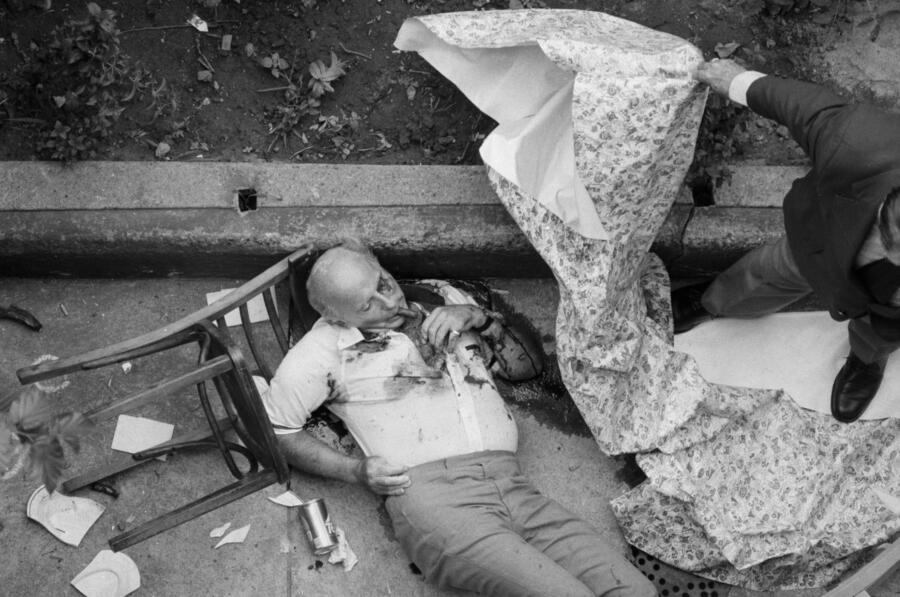Kevin Flynn works for the The New York Times, where he started out in crime (not as in living a life of crime, but rather writing about it). He told us how he ended up editing a mesmerizing new crime compilation from the paper of record.
How did you get started as a crime reporter?
I was stationed in police headquarters. It always helps to be down at the station. Once you see them every day you build relationships where people come to trust you. The relationship is always put in some kind of crisis when you write something critical. Then it’s repaired when you write something else. I grew up in the Bronx and a lot of the kids I went to school with ended up being police officers. I was very comfortable hanging around with police officers.
How did the book come about?
The book had to have a finite number of stories — 90 nearabouts. To cover the entire 166 years since the founding of The New York Times, including all the crimes across the world in 90 stories is a daunting task. So, I decided to do it by type of crime, such as one chapter on prison, one on sex crimes. Within that, we created something approaching a “greatest hits”. One of things I found grim and disturbing was that I had to have one chapter on murder, one on serial murder and one on mass murder, because they really are three different types of crime. As for ‘organized crime’, summing it up in ten stories is impossible. For that chapter, I just did one mob hit—the killing of Carmine Galante on the patio of an Italian restaurant in Brooklyn. There’s a really great image of Galante right after he was shot at Joe and Mary’s Restaurant, slumped under the table with the salad he was eating still on the plate and a cigar clenched in his teeth. That became an iconic photo.
What’s the earliest story in the book?
It’s about torture in prison. Doctors involved in taking care of prisoners became alarmed; it was something of an exposé in 1852. The earliest crime is the Lincoln assassination in 1865. There are some others from roughly that era — Jack the Ripper was 1888. Then we have Jesse James in 1881. It was written when he was just the person Jesse James, not ‘Jesse James’ the iconic gunslinger legend. He’s just another guy robbing trains.
Are there more gory details then or now?
We’re getting more colloquial, but I don’t think that we ever get too graphic. Certainly, in the case of an assassination like that of President Kennedy, they describe the exit and entry wounds because it was very important to conspiracy theories. In general, there’s not much of a depiction of goriness. That hasn’t changed over time.
What was your “favorite” crime?
Flynn: was once Isabella Stewart Gardner’s private home. She didn’t want anything to be touched or changed once they started the museum. It didn’t have signs to identify paintings. She said, “If you change anything it all goes to Harvard.” In 1990, a couple of guys dressed up as Boston cops showed up on St. Patrick’s Day eve. The security wasn’t up to the level of the art. Next thing you know, they are not cops, the guards are tied up, and 12 masterpieces were taken — Rembrandts, a Vermeer, a Manet. They have never been recovered. The thieves had cut the paintings out of their frames and rolled them up. Because of Gardner’s rule, when you go to Gardner museum today, there are empty frames sitting on the wall. It’s an immediate eerie recollection of what happened years ago.
Is there a “Crime of the Century”?
Every six months someone decides there’s one. But take the 1906 murder that was included in the movie Ragtime: Evelyn Nesbit was America’s first supermodel. She had a jealous but rich husband and was having an affair with the architect Stanford White. At a nightclub in Madison Square, White is shot in the middle of a performance, and the trial dragged out. That was a Crime of the Century; but 50 years later you have to knock people on the side of head to get them to remember it. It’s similar if I talk to my kids about the Lindbergh baby—they don’t have any idea. More recently, the Trial of the Century was O.J. was so spellbinding. We’re about to begin covering the Cosby trial – I don’t think there’s been a trial in America since O.J. that’s been so closely watched.
The New York Times Book of Crime: More Than 166 Years of Covering the Beat, edited by Kevin Flynn, with a forward by Richard Price is available in The New York Times store.
*This interview has been edited and condensed
Related Features:


